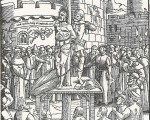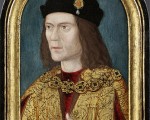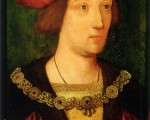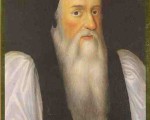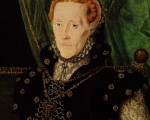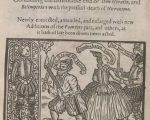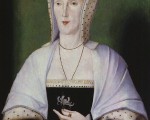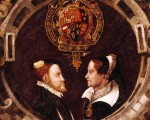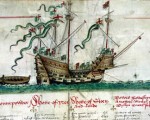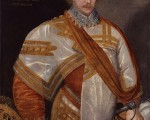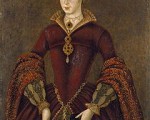
YOUR SEARCH UNCOVERED 2359 RESULTS
-
Expert live chats timetable – 28 October Open Day

-
18 October 1555 – Elizabeth is free to go to Hatfield

-
This week in history 17-23 October
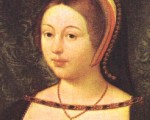
On this day in history events for week 17th to 23rd October.
17th October:
[Read More...]
1560 – Baptism of Walter Marsh, spy and Protestant martyr, at St Stephen’s Church, Coleman Street, London. Marsh was burned to death in Rome’s Campo dei Fiori after having his tongue and hands cut off. He had been accused of being paid by Elizabeth I to spy on Catholics and showing contempt for the Eucharist.
1586 – The poet, courtier and soldier Sir Philip Sidney died as a result of an injury inflicted by the Spanish forces at the Battle of Zutphen in the Netherlands. His body was returned to England and laid to rest on the 16th February 1587 in St Paul’s Cathedral. -
This week in history 10 – 16 October
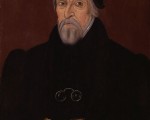
On this day in history events for week beginning 10th October…
10th October:
[Read More...]
1505 (10th or 11th) – Death of William Barons (Barnes), Bishop of London and former Master of the Rolls. He was buried at St Paul’s Cathedral.
1530 – Death of Thomas Grey, 2nd Marquis of Dorset, magnate, soldier and courtier. He was buried at Astley Collegiate Church in Warwickshire. Grey’s offices included Constable of Warwick Castle and of Kenilworth Castle, and he also acted as Chief Answerer at the marriage of Prince Arthur and Catherine of Aragon. Grey was also the grandfather of Lady Jane Grey.
1549 – Edward Seymour, Duke of Somerset and Lord Protector, was ordered to leave Windsor Castle and to give himself up. He had moved there with the young Edward VI on the 6th October, from Hampton Court Palace, after learning that his protectorship was in danger. -
Claire’s visit to London Charterhouse
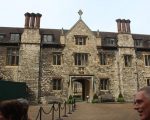
In this week’s Claire Chat’s video I talk about my recent visit to London Charterhouse and the history of the site. I hope you enjoy the talk and the photos.
[Read More...] -
This week in history 3 – 9 October
-
This week in history 26 September – 2 October
-
This week in history 19 – 25 September
-
This week in history 12 – 18 September
-
Fliers for MadeGlobal’s “An Evening with the Authors” 24 Sept

Many of the Tudor Society members will be at MadeGlobal’s “An Evening with the Authors” event on 24 September in central London, and it would be so lovely to see you there.
[Read More...] -
This week in history 5 – 11 September
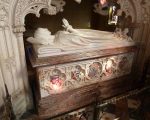
-
This week in history 29 August – 4 September
-
My Peggy Nisbet Dolls Collection
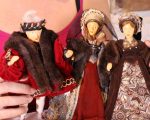
I quite often receive questions about the dolls I have on my bookcase and Margaret asked if I would do a Claire Chats video on them, explaining how/where I got them. So, here you go! My collection is all down to my dear friend Dawn Hatswell – thank you Dawn!
[Read More...] -
This week in history 22 – 28 August
-
The Tudors’ Journey to Bosworth: Part 7 – The Battle of Bosworth by Tony Riches
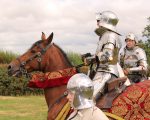
In this series, I have followed the progress of Henry and Jasper Tudor from Pembroke Castle to their long exile in Brittany and their return with an army to Wales. Their long march, covering as much as twenty-six miles a day, ended when they encountered King Richard III’s army camped at Ambion Hill, close to Sutton Cheyney.
The Battle of Bosworth is poorly documented, with no first-hand accounts surviving. Anything we read about the battle, therefore, has to be looked at closely to see who wrote it and when. One of the best summaries of the often conflicting accounts is Chris Skidmore’s book, Bosworth – The Birth of The Tudors. Even as Chris was writing the book, news emerged of a new location for the battlefield site, and the bones of Richard III were discovered in a car park as he completed the first draft.
[Read More...] -
This week in history 15 – 21 August
-
10 August 1512 – The Battle of Saint-Mathieu
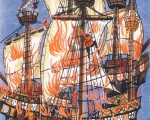
On the 10th August 1512, the Battle of Saint-Mathieu, a battle in the War of the League of Cambrai, took place between the English and Franco-Breton fleets off the coast of Brest. England at this time was allied with Spain and the Holy Roman Empire against France.
[Read More...] -
The Tudors’ Journey to Bosworth: Part 6 – The Tudors Land at Mill Bay in Pembrokeshire by Tony Riches
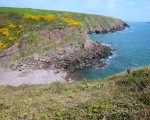
After following the long exile of Jasper and Henry Tudor in Brittany, I have now returned to Pembrokeshire in West Wales. The Tudors had made an unsuccessful attempt to invade England in 1483 but learned from this near disaster. On Monday 1st of August, 1485 they sailed again from the mouth of the Seine with their mercenary army of some four thousand men to challenge King Richard III for the crown.
It seems the sea voyage led by the Poulian De Dieppe, flagship of their capable captain, Guillaume de Casenove, was uneventful and had the benefit of favourable winds. They made landfall at Mill Bay, a secluded, pebble-strewn beach in the far west of Wales just before sunset on Sunday 7th August. It is reported that, on going ashore, Henry Tudor kissed the ground and recited a Psalm in Latin. Some accounts suggest it was Psalm 23, but the consensus was Psalm 46: ‘Judge me, O God, and plead my cause against an ungodly nation: O deliver me from the deceitful and unjust man.’
[Read More...] -
The Tudors’ Journey to Bosworth: Part 5 – Jasper Tudor at Château Josselin, Brittany by Tony Riches

In this series, I have followed Jasper Tudor and his nephew Henry’s escape from Tenby in Wales to their long exile in Brittany. Young Henry Tudor found himself deep in the forest at the remote Forteresse de Largoët, outside of the Breton town of Elven. He would have missed the company of his uncle Jasper, who was now in a far grander place, the Château de Josselin.
Originating from the year 1008, the château overlooking the River Oust has changed many times over the centuries. Olivier de Clisson, Constable of France, became Lord of Josselin in 1370 and rebuilt the fortress with eight high towers and married his daughter Beatrice to Viscount Alain de Rohan. During the religious wars of the seventeenth century, Duke Henri de Rohan commanded the Calvinists and his château was sacked by Cardinal de Richelieu. Only four of the original towers remain today, but the château is still home to the fourteenth Duke Josselin de Rohan.
[Read More...] -
This week in history 8 – 14 August
-
The Tudors’ Journey to Bosworth: Part 3 – Exiled at Château de Suscinio, Brittany, by Tony Riches
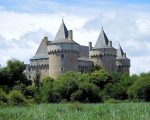
In the first two parts of this series, I followed Jasper Tudor and his fourteen-year-old nephew Henry’s escape from Tenby in Wales and their arrival in Brittany. The Tudors are recorded as spending a year in Vannes as guests of Duke Francis of Brittany but, in October 1472, the duke became concerned they might be abducted by York’s agents. They were moved to his remote ‘hunting lodge’ by the sea, south of Vannes, the Château de Suscinio.
The Tudors’ new home had been fortified in the fourteenth century by Breton knight Bertrand du Guesclin, nicknamed ‘The Eagle of Brittany’, a military commander during the Hundred Years’ War. As well as building the seigniorial residence block and a corner tower known as the Tour Neuve, the moat was deepened and a raising drawbridge added, together with casemates to house artillery. By the time the Tudors arrived, the original thirteenth century château resembled a castle of generous proportions.
[Read More...] -
The Tudors’ Journey to Bosworth: Part 2 – Exiled at Château de l’Hermine, Brittany, by Tony Riches
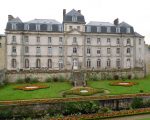
In the first part of this series, I followed Jasper Tudor and his young nephew Henry’s escape from Tenby in West Wales. There are tales of storms and of them being forced to shelter in the lee of the island of Jersey before they were able to make landfall at the Breton fishing port of Le Conquet in September 1471.
Jasper and Henry sought sanctuary from Duke Francis of Brittany and became his guests at the ducal palace, the Château de l’Hermine in Vannes. Duke Francis was a skilled politician, so would have appreciated the political value of the exiled Tudors to King Edward IV of England, as well as to his rival King Louis of France, to whom they were related through the Valois family of Jasper’s mother, Henry’s grandmother, Queen Catherine.
[Read More...] -
The Tudors’ Journey to Bosworth: Part 1 by Tony Riches
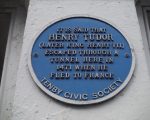
Henry Tudor’s return from exile to victory at Bosworth has to be one of the greatest moments in the history of the Tudor dynasty. So why is the Bosworth story so often told from the perspective of Richard III, with Henry depicted as lucky to have won?
I was born within sight of Pembroke Castle and have always been intrigued by the small room where the thirteen-year-old Lady Margaret Beaufort gave birth to the future king, Henry Tudor. I’ve also stood on the remote beach at Mill Bay near Milford Haven imagining how Henry would have felt as he approached with his uncle Jasper and his mercenary army.
All I knew about Jasper’s father, Henry’s grandfather, Owen Tudor, was that he’d been a Welsh servant who somehow married the young widow of King Henry V, Queen Catherine of Valois. Inspired to write a historical fiction trilogy about them, I wanted to research their stories in as much detail as possible and to sort out the many myths from the facts.
[Read More...] -
This week in history 1 – 7 August
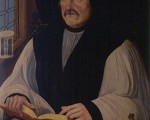
-
This week in history 25 – 31 July
-
The Mary Rose – Behind the scenes

As part of this month’s Mary Rose feature, with our guest speaker Philip Roberts (author of “The Mary Rose in a Nutshell), we have this wonderful video showing some behind-the-scenes footage of the ship and its treasure trove of finds.
[Read More...] -
This week in history 18 – 24 July
-
12 July 1537 – The execution of Robert Aske
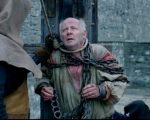
On this day in history, 12th July 1537, Robert Aske, lawyer and rebel, was hanged in chains outside Clifford’s Tower, the keep of York Castle. Aske was one of the leaders of the rebels in the 1536 northern uprising known as the Pilgrimage of Grace – click here to see a Pilgrimage of Grace timeline and here to read an article on the rebellion.
Being hanged in chains was an awful way to die. Those executed this way were usually hanged alive in chains – rather than being hanged first in the usual manner and then put in chains on display – and took several days to die, being slowly suffocated to death. Horrible!
[Read More...] -
This week in history 11 – 17 July
-
This week in history 4 – 10 July

